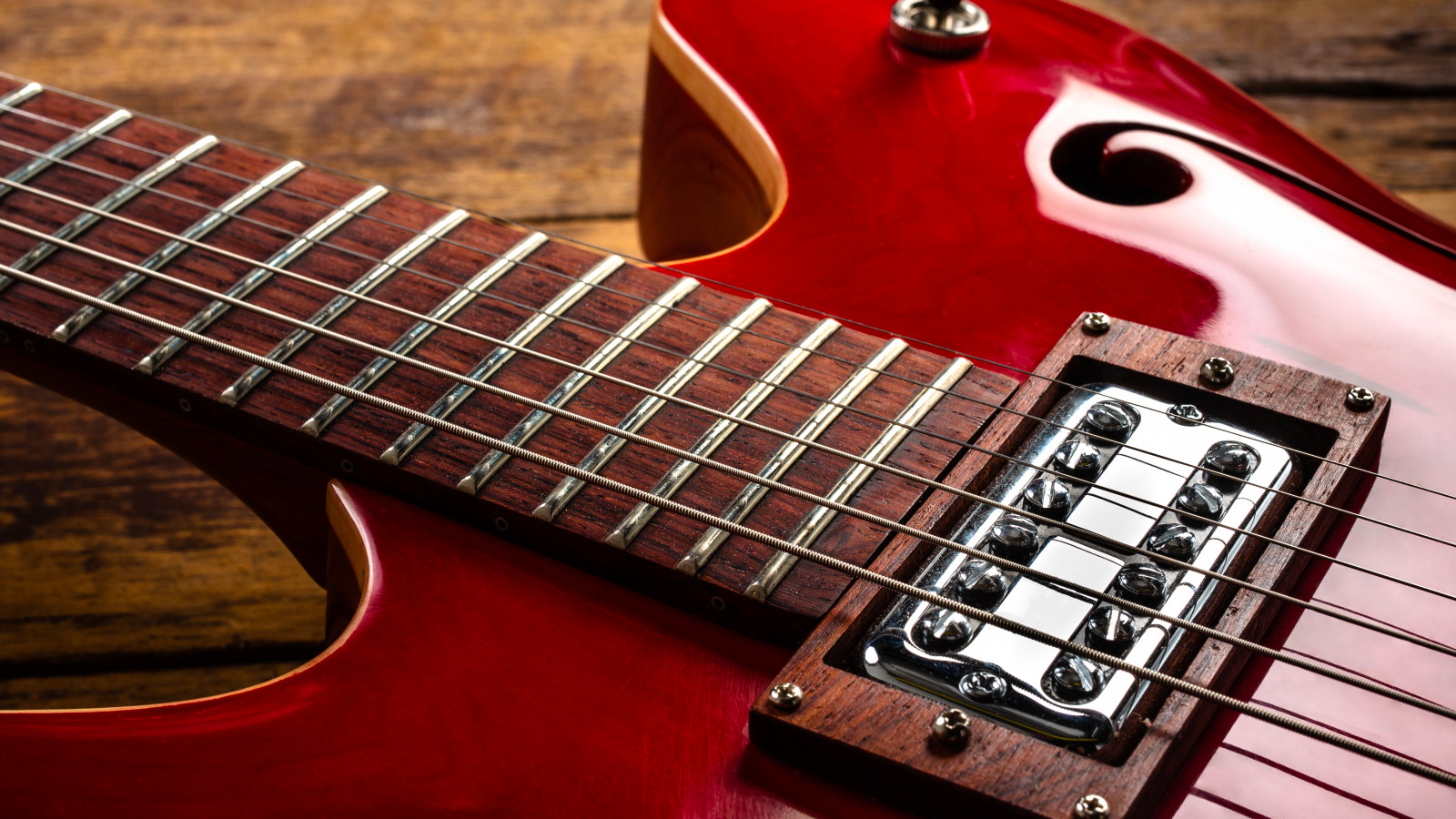Shaping the tone for an electric guitar is both an art and a science. While the science gives us the tools and knowledge to manipulate sound, the art is about expressing oneself and connecting with the audience. By understanding and merging both aspects, guitarists can unlock a world of sonic possibilities and truly make the instrument their own.
RELATED: Get Eric Johnson’s NEW TrueFire Course and In The Jam Now >
1. The Science of Tone:
a. The Guitar‘s Anatomy:
Every part of the guitar contributes to its tone. The wood type (alder, mahogany, maple, etc.), the body shape, the neck joint, and even the finish can influence the sound. For instance, a hollow-body guitar will have a more resonant and warm tone compared to a solid body, which offers more sustain and punch.
b. Pickups:
These are magnets that capture the vibration of the strings and convert them into an electrical signal. There are different types, like single coils (bright and clear) and humbuckers (warm and full). The placement of the pickup (closer to the neck or bridge) also affects the tone.
c. Strings:
The gauge, material, and age of the strings can significantly influence the sound. Thicker strings tend to produce a fuller, louder tone, while thinner strings offer a brighter sound.
d. Electronics:
The potentiometers (volume and tone knobs) and capacitors in the guitar‘s circuitry can be adjusted or swapped out to refine the guitar‘s output.
2. The Art of Tone:
a. The Player’s Touch:
The way a guitarist picks, strums, or fingers the strings can drastically change the sound. The dynamics, pick angle, and even the type of pick used can all contribute to a unique tone.
b. Amplification:
The choice of amplifier and its settings play a massive role in shaping the guitar‘s tone. Tube amps are known for their warm, organic sound, while solid-state amps offer clarity and consistency.
c. Effects Pedals:
These are external devices that modify the guitar‘s signal to produce various sounds. From the creamy overdrive of a Tube Screamer to the spacious echoes of a delay pedal, the possibilities are endless.
d. Listening and Adjusting:
The art of tone is also about listening. It’s about understanding the nuances of different sounds and making adjustments based on the musical context. Sometimes, a simple tweak on the tone knob or a change in picking technique can make all the difference.
3. The Quest for the Perfect Tone:
Here’s 10 guitarists who have left an indelible mark on music history, not just with their playing, but with the unique tones they’ve sculpted.
1. Jimi Hendrix:
The psychedelic maestro, Hendrix, transformed the electric guitar‘s sonic potential. His Fender Stratocaster, combined with a stack of Marshall amps and pioneering use of effects like the Univibe and Fuzz Face, produced tones ranging from the otherworldly wails of “Voodoo Child” to the delicate whispers of “Castles Made of Sand.”
2. David Gilmour (Pink Floyd):
Gilmour’s sound is the stuff of legends. His solos are a masterclass in tone crafting. Utilizing Fender Stratocasters, lap steel guitars, and a meticulous selection of effects, he created sounds that are spacious, ethereal, and deeply emotional. The soaring notes of “Shine On You Crazy Diamond” are a testament to his tonal genius.
3. BB King:
BB King’s tone is as iconic as the blues itself. His beloved Lucille, a Gibson ES-355, was often played with minimal effects, letting the guitar‘s natural voice shine through. The result was a creamy, vocal-like tone that made every note sing.
4. Eric Clapton:
Clapton’s journey through tone is a reflection of his musical evolution. From the thick, creamy “woman tone” of his Cream days achieved with a Gibson SG, to the crisp clarity of his Fender Stratocaster in his solo career, Clapton’s sound has inspired multiple generations.
5. Brian May (Queen):
May’s self-built “Red Special” guitar, combined with his treble booster and Vox AC30 amps, resulted in a tone that’s instantly recognizable. Whether it’s the multi-layered harmonies of “Bohemian Rhapsody”, or the biting riffs of “Tie Your Mother Down”, May’s sound is unmistakably his own.
6. Eddie Van Halen:
Beyond his groundbreaking techniques, Eddie’s “brown sound” is a cornerstone of rock guitar tone. His Frankenstrat, paired with a modified Marshall amp, produced a warm yet aggressive overdrive that became the blueprint for hard rock and metal guitarists.
7. Stevie Ray Vaughan:
Vaughan’s tone was like a force of nature. His Fender Stratocasters, often strung with thick strings and played with raw intensity, produced a sound that was both gritty and clear. Paired with Fender and Dumble amplifiers and the iconic Ibanez Tube Screamer, SRV’s tone was as big as Texas itself.
8. John Mayer:
Mayer’s versatility is reflected in his tone. From the smooth, Dumble-inspired sounds of “Gravity” to the gritty blues of “Crossroads”, Mayer’s extensive use of various guitars, amps, and effects showcases his deep understanding and respect for tone.
9. Eric Johnson:
A perfectionist in every sense, Johnson’s tone is a thing of beauty. Known for his meticulous choice of gear, including Fender Stratocasters, Gibson ES-335s, and Marshall and Fender amplifiers, Johnson crafts tones that are harmonically rich and incredibly detailed. His instrumental “Cliffs of Dover” showcases his tonal palette, blending clarity with warmth in a way few can achieve.
10. Jeff Beck:
Beck’s approach to the guitar is almost vocal in its expressiveness. His use of the whammy bar, combined with his fingerstyle technique, creates a tone that’s both dynamic and sensitive. Whether he’s playing a Fender Stratocaster or a Gibson Les Paul, Beck’s sound is always uniquely his.
RELATED: Get Eric Johnson’s NEW TrueFire Course and In The Jam Now >
